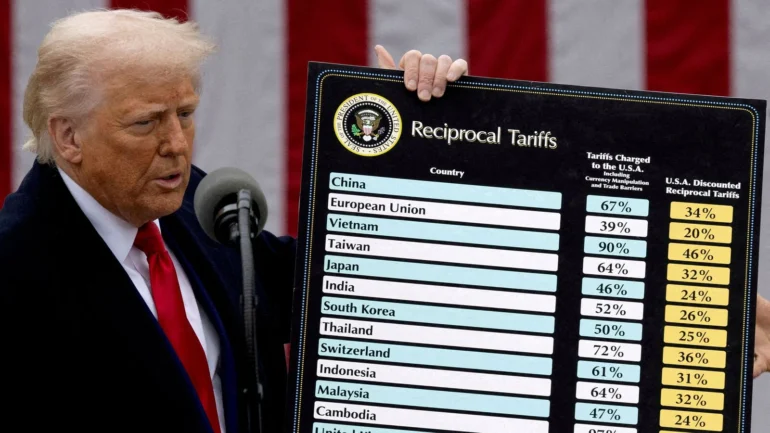In recent months, a new excuse has echoed through U.S. bankruptcy courtrooms: tariffs. From home decor retailer At Home Group Inc. to tile importer Mosaic Cos., auto-parts supplier Marelli Holdings Co., and aluminum trader Sinobec Group Inc., CEOs are pointing to tariffs as the reason for their companies’ financial collapse. Since April 2025, when former President Donald Trump announced a fresh wave of levies, at least 10 U.S. companies have cited tariffs in their bankruptcy filings, according to Bloomberg data. But is this explanation as straightforward as it seems, or are tariffs just a convenient scapegoat for deeper corporate troubles?
At Home Group Inc., a Texas-based retailer selling everything from patio furniture to generic wall art, is a prime example. Last month, its lawyer stood before a bankruptcy judge, arguing that tariffs were to blame for the company’s nearly $2 billion debt. The retailer plans to close at least 26 of its 250+ stores, including its Rego Park location in Queens, New York, where disappointed customers mourned the loss of affordable home goods. But a closer look reveals that At Home’s problems started long before the latest tariffs. A 2021 buyout by private equity firm Hellman & Friedman left the company with a massive debt load. The COVID-19 pandemic disrupted supply chains, driving up material and labor costs. Meanwhile, consumers shifted their spending to travel and leisure, leaving home goods retailers like At Home struggling. By 2023, credit-rating downgrades and a distressed debt exchange signaled trouble, well before tariffs entered the picture.
Economists argue that blaming tariffs is premature. Stephanie Roth, chief economist at Wolfe Research, points out that companies typically hold several months’ worth of inventory, meaning the impact of new tariffs wouldn’t hit immediately. Plus, the U.S. economy is showing resilience, with strong job growth, rising wages, and a low unemployment rate. “Companies are struggling, but the tariffs did not put them into bankruptcy,” Roth says. She suggests that only a significant economic downturn, like a weakening labor market, would justify such widespread corporate failures.
This isn’t the first time companies have pointed fingers elsewhere to explain their woes. In the past, CEOs have blamed everything from unpredictable consumers to currency fluctuations or even bad weather—anything but their own missteps. Analysts believe tariffs could eventually push struggling companies over the edge, but right now, they’re often a convenient excuse to mask deeper issues like poor management, excessive debt, or failure to adapt to changing markets.
The tariff narrative fits into a familiar corporate playbook: deflect responsibility to external forces. For companies like At Home, the real culprits—high debt, supply chain disruptions, and shifting consumer habits—were already eroding their foundations. Tariffs may add pressure, but they’re not the whole story. As more businesses head to bankruptcy court, it’s worth asking: Are tariffs truly to blame, or are they just a convenient way to dodge accountability?
